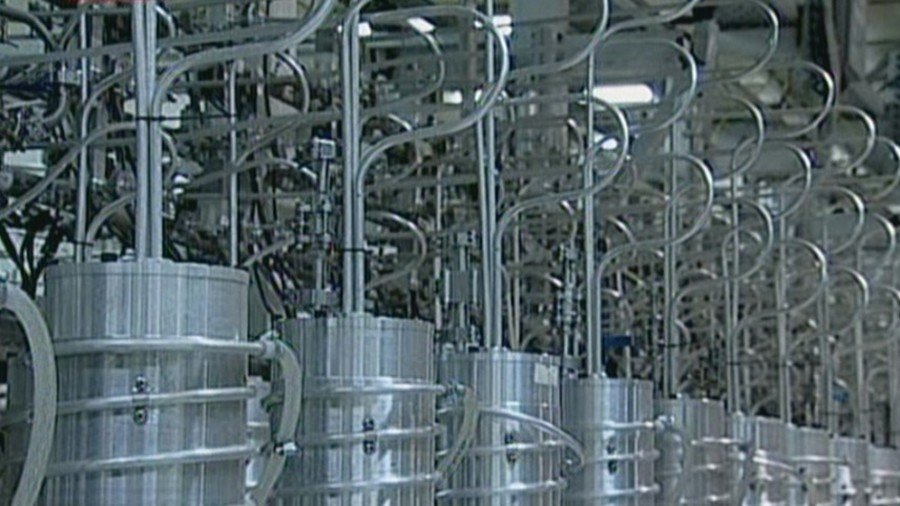Iran vows to reopen Fordow uranium enrichment plant if nuclear deal collapses

Collapse of the 2015 nuclear deal will prompt Iran to reopen its second uranium enrichment facility in Fordow, the country’s nuclear agency said. Last week, Tehran announced plans to resume enrichment within the scope of the deal.
“Currently the Supreme Leader has ordered that the programs be carried out within the parameters of the nuclear deal,” spokesman for the Atomic Energy Organization of Iran (AEOI) Behrouz Kamalvandi told the Young Journalists' Club (YJC) in an interview. “And when he gives the order we will announce the programs for operating outside of the nuclear deal for reviving Fordow.”
He added that new equipment would also be installed at the Natanz nuclear facility.
Last week, Iran’s Supreme Leader Ayatollah Ali Khamenei ordered the AEOI to prepare the Natanz facility for resuming the enrichment process. The installation is expected to be ready to house 60 enrichment centrifuges in a month, according to Iranian officials. The decision to resume the enrichment process does not violate the 2015 agreement, officially known as the Joint Comprehensive Plan of Action (JCPOA), as the country is allowed to enrich small amounts of uranium for medical and research purposes.
The Fordow plant is the second uranium enrichment facility, located to the north-east of the city of Qom. The secretive installation, buried deep underground, was revealed to the International Atomic Energy Agency (IAEA) back in 2009. No pictures of the location, except for satellite imagery, have emerged so far.
Following the US decision to leave the deal on May 8, other signatories struggled to prevent it from crumbling. Close US allies – France, UK, and Germany – vowed to maintain the deal, agreeing, however with Washington that Iran’s missile program and regional activities might become a subject for future negotiations.
Tehran, however, refused to re-negotiate the agreement in any fashion, urging all the parties to actually fulfill their obligations. Iran’s compliance with the JCPOA has been regularly confirmed by the IAEA experts.
Top Iranian officials repeatedly warned that if the country did not receive the economic benefits from the JCPOA, it would be forced to quit it. Talking to France’s Emmanuel Macron on the phone, Iranian President Hassan Rouhani stressed that signatories “should not allow this very great diplomatic achievement to be destroyed by the others' unilateral measures and acts of violation.”
“If Iran cannot enjoy the agreement's benefits, it will be practically impossible to stay in it,” Rouhani told Macron on Tuesday, as quoted by state media.
While European countries declared their commitment to the deal and promised to “protect” their companies operating in Iran from potential US sanctions, the businesses have already begun to leave the country. On Wednesday, Austria's Oberbank announced its withdrawal from Iran over the threatened sanctions. Oberbank was one of the first Western banks to enter the Iranian market following the landmark agreement.
Like this story? Share it with a friend!
















